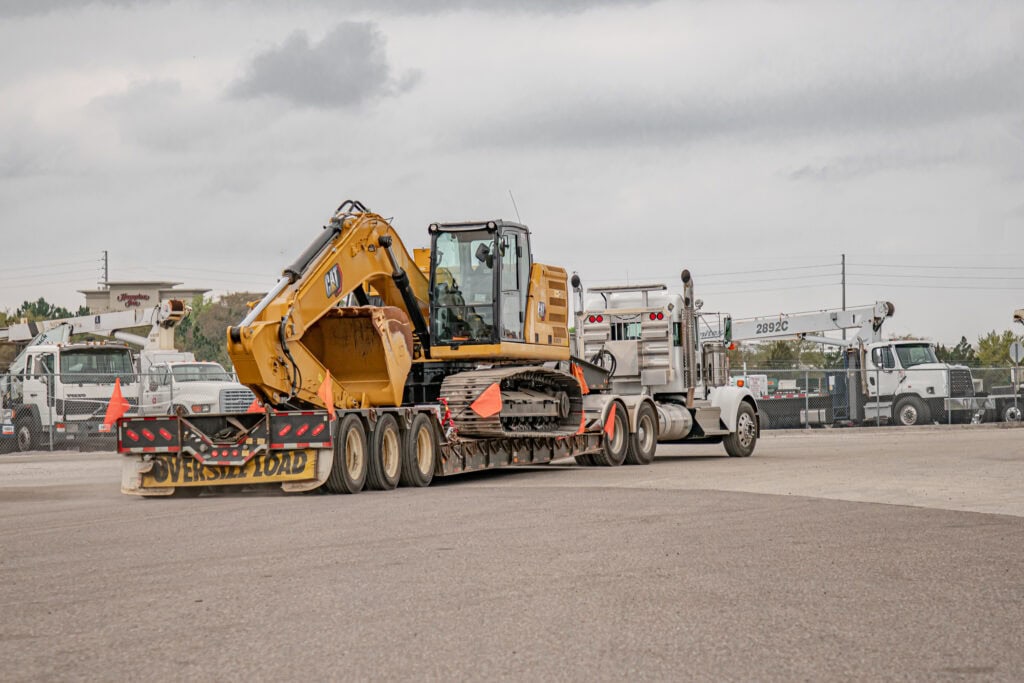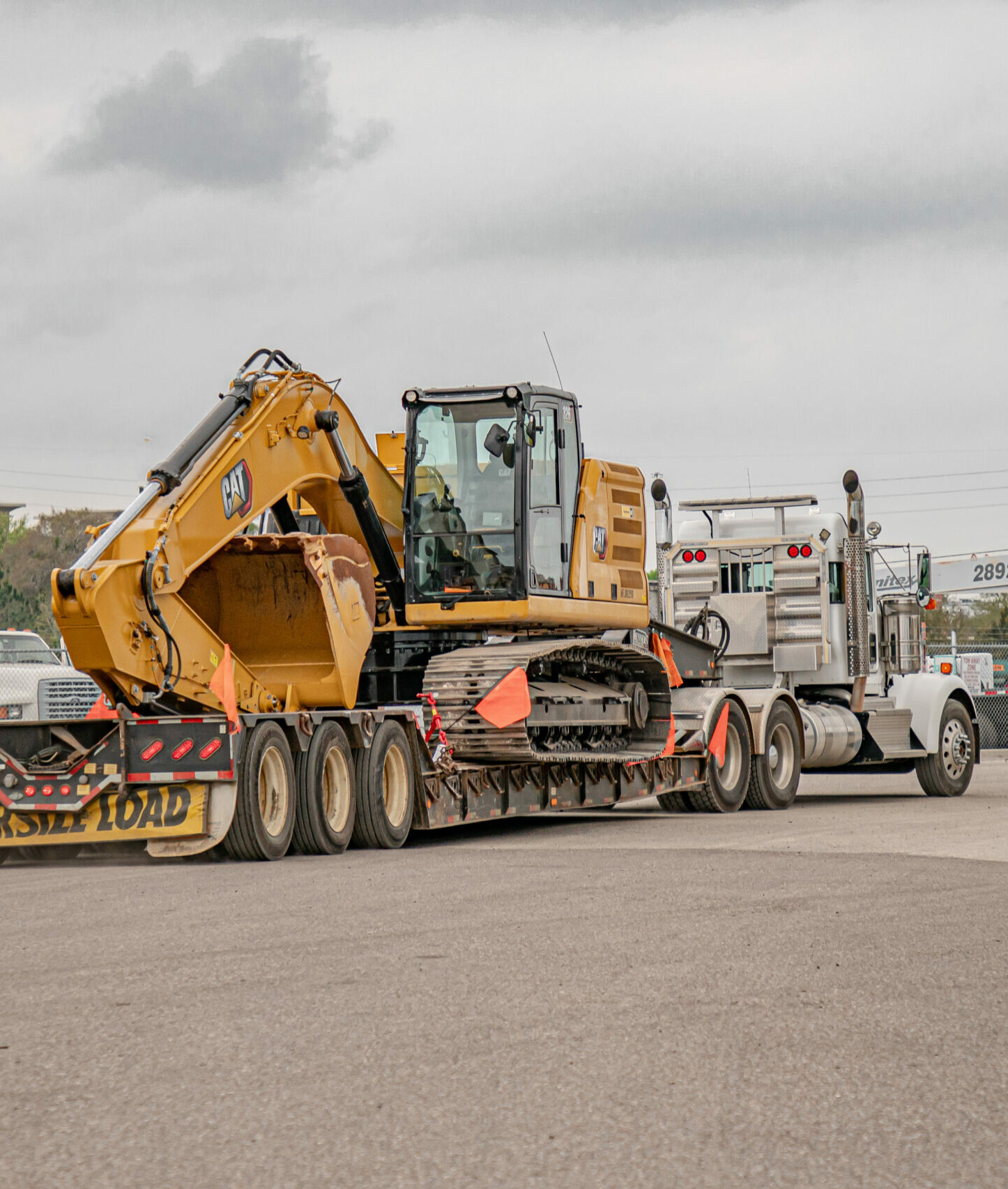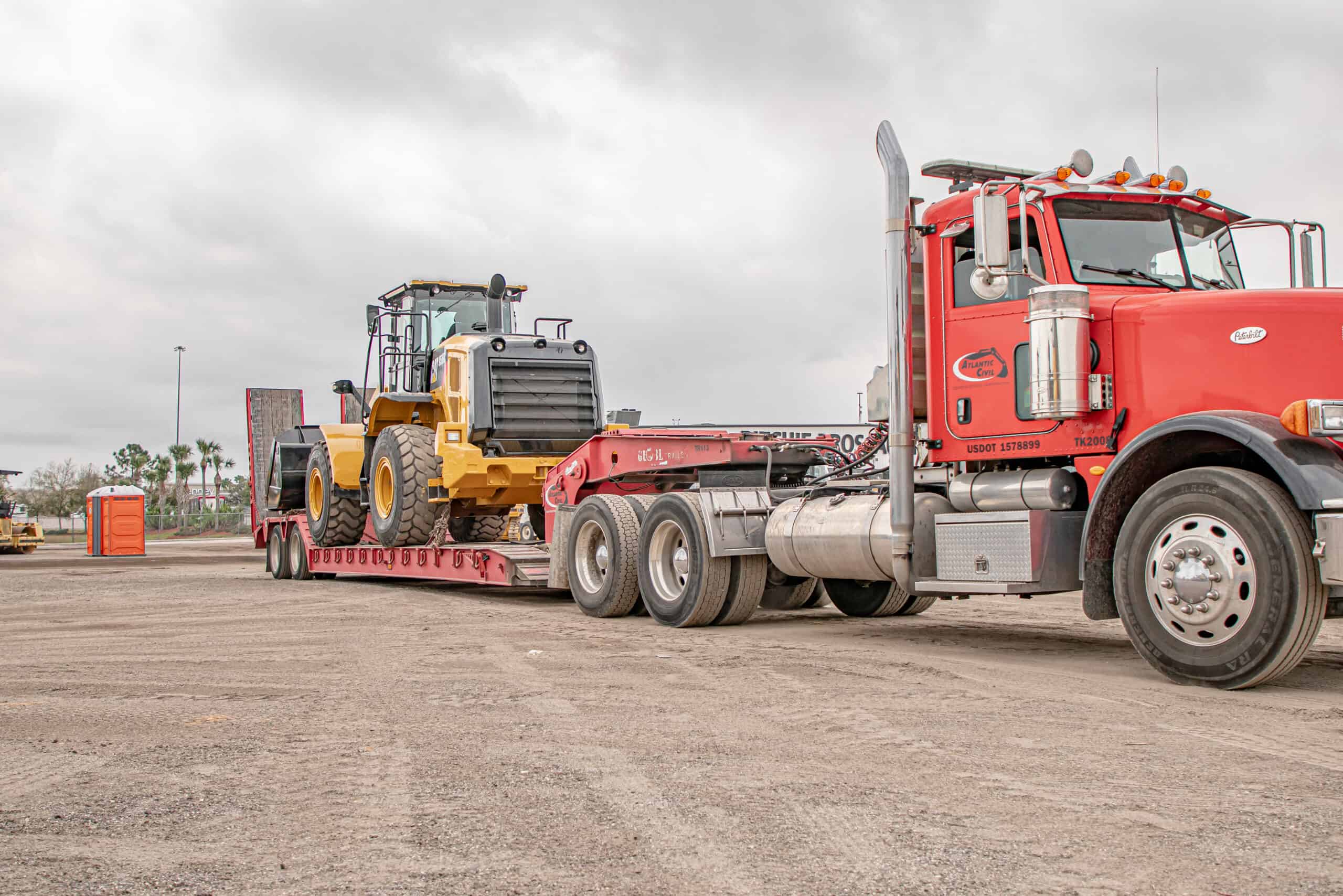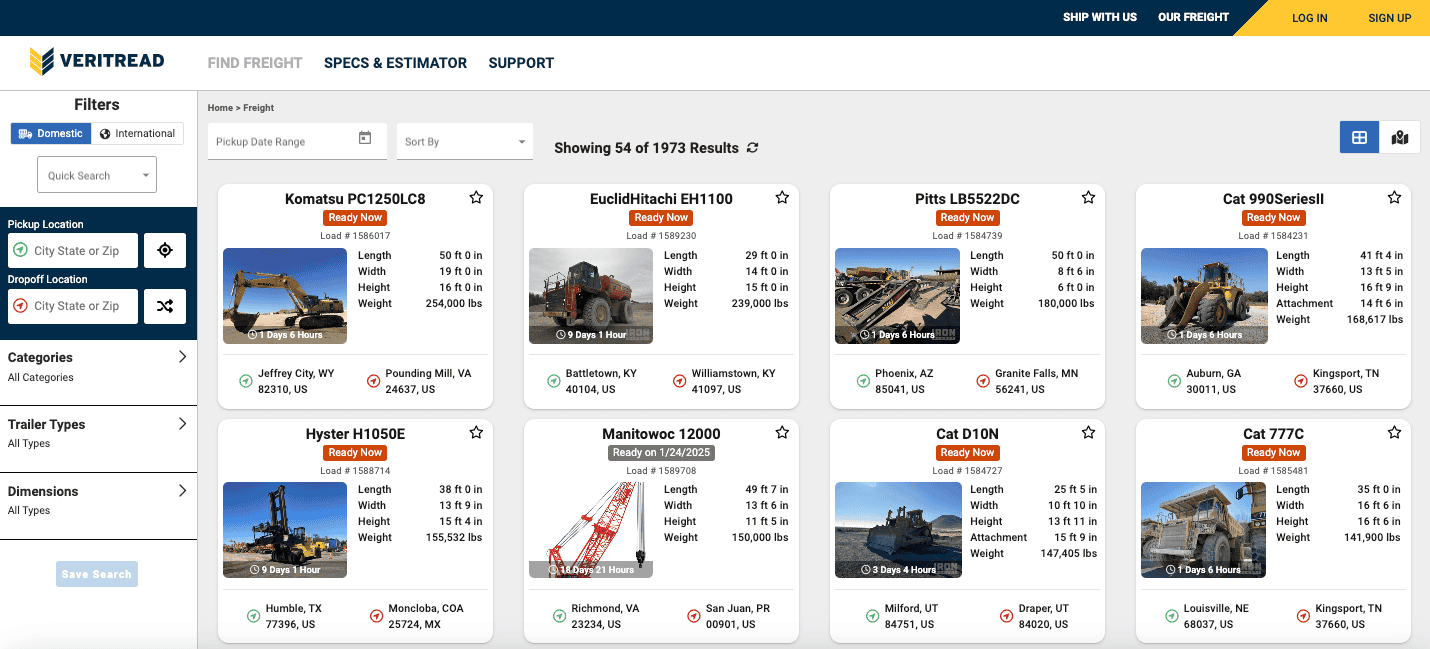Basic Tips of Heavy Equipment Transport

Transporting heavy equipment is a complex and important task that requires specialized knowledge and preparation. Whether you’re in construction, agriculture, or any industry that utilizes large machinery, ensuring the safe and efficient transport of your equipment is paramount. In this comprehensive guide, we will explore what heavy equipment transport entails, how it differs from regular freight shipping, and provide practical advice on preparing your machinery for transit. We’ll also dive into legal requirements and restrictions to keep you compliant and prepared.
Outline:
- What Is Heavy Equipment Transport and How Does It Differ From Regular Freight Shipping?
- How Do You Determine If Your Equipment Requires Heavy Equipment Transport Services?
- What Are The Common Types Of Heavy Equipment Transported In Various Industries?
- How Can Businesses Prepare Their Heavy Equipment For Safe and Secure Transportation?
- What Are The Legal Requirements And Restrictions for Transporting Heavy Equipment?
What Is Heavy Equipment Transport and How Does It Differ From Regular Freight Shipping?
Heavy equipment transport is a specialized form of freight shipping that focuses on moving large, bulky, and often heavy machinery or construction equipment. This includes items like excavators, bulldozers, cranes, and agricultural machinery. Here are some key differences between heavy equipment transport and regular freight shipping:
Cargo Type:
- Heavy equipment transport: Deals with oversized and overweight items like construction machinery (excavators, bulldozers), industrial equipment, wind turbines, etc.
- Regular freight shipping: Typically involves smaller, lighter items that can be easily loaded onto standard trucks.
Equipment:
- Heavy equipment transport: Requires specialized trailers like flatbeds, step decks, or lowboy trailers.
- Regular freight shipping: Can often be transported using standard trucks and trailers.
Experience & Securement:
- Heavy equipment transport: Requires specialized knowledge and experience in loading, securing, and transporting heavy machinery.
- Regular freight shipping: Involves general freight handling practices.
Cost:
- Heavy equipment transport: Generally more expensive due to specialized equipment, permits, and expertise.
- Regular freight shipping: Typically has lower costs due to standardized processes.
Essentially, heavy equipment transport is a highly specialized service that demands specialized equipment, expertise, and planning to safely and efficiently move large, complex machinery. Regular freight shipping, on the other hand, focuses on the transportation of smaller, more standardized cargo using standard equipment and processes.
How Do You Determine If Your Equipment Requires Heavy Equipment Transport Services?
If your equipment meets any of the following criteria, it likely requires heavy equipment transport services:
- Overweight: Equipment that exceeds weight limits for standard transportation.
- Oversized: Equipment that exceeds standard truck dimensions (height, width, or length).
- Type of Heavy Equipment: Construction, Agriculture, Industrial, and etc. These types of machinery should be hauled by a heavy transport service.
- Non-Standard Requirements: Requiring specialized loading, securing, or permits.
If you’re unsure, it’s always best to consult with a heavy equipment transport specialist. They can help determine your equipment’s specific needs and provide expert guidance.
What Are The Common Types Of Heavy Equipment Transported In Various Industries?
Heavy equipment transport is essential for various industries. Here’s a breakdown of commonly transported equipment across different sectors:
Construction:
- Earth moving equipment: Excavators, bulldozers, backhoes, loaders
-
Cranes: Mobile cranes, crawler cranes, tower cranes
-
Road Construction Equipment: Asphalt pavers, rollers, graders
-
Construction Machinery: Concrete mixers, pumps, generators
Agriculture:
- Tractors: Various sizes and types
- Combines: For harvesting grains
- Planters: For sowing seeds
- Harvesters: For various crops
- Irrigation Equipment: Pumps, sprinklers
Industrial:
- Forklifts: Various capacities and types
- Generators: For power supply
- Industrial Machinery: Large components and equipment
- Manufacturing Equipment: Heavy machinery for production processes
Mining:
- Drilling Rigs: For oil and gas extraction
- Pumping Units: For oil and gas production
- Pipeline Equipment: For transporting oil and gas
- Construction Equipment: Used for infrastructure development
Note: This list is not thorough and there are many other types of heavy equipment transported across various industries. The specific equipment will depend on the industry’s needs and the scale of operations.
How Can Businesses Prepare Their Heavy Equipment For Safe and Secure Transportation?
Preparation is key to ensuring the safe and secure transport of heavy equipment. Here are some tips to guide and help get you get ready for transporting:
Equipment Preparation:
- Thorough Cleaning: Remove dirt, debris, and any fluids to showcase the equipment’s condition.
- Functional Check: Ensure all components and systems are in working order.
- Repairs and Maintenance: Address any necessary repairs to improve equipment value.
- Documentation: Gather all relevant paperwork, including maintenance records, titles, and permits.
Equipment Securing:
- Choose the Right Trailer: Select a trailer that is appropriate for the size, weight, and dimensions of the equipment.
- Proper Loading: Ensure the equipment is loaded evenly and securely onto the trailer.
- Tie-Downs: Use high-quality chains or tie-downs and secure the equipment to the trailer at multiple points.
- Blocking and Bracing: Utilize blocking and bracing to prevent equipment movement during transport.
Transportation Planning:
- Equipment Assessment: Determine the equipment’s dimensions, weight, and any special handling requirements.
- Carrier Selection: Choose a reputable heavy equipment transport company with experience handling similar equipment.
- Route Planning: If necessary, work with the carrier to plan the most efficient route, considering permits and restrictions.
- Insurance Verification: Ensure adequate insurance coverage for both the equipment and potential damages during transport.
- Loading and Securing: Collaborate with the carrier to determine the best loading and securing methods and provide loading assistance such as cranes or forklifts if needed.
By following these guidelines, businesses can significantly reduce the risk of damage to their equipment and ensure safe transportation.
What Are The Legal Requirements And Restrictions for Transporting Heavy Equipment?
Transporting heavy equipment is subject to a complex web of regulations, primarily governed by the Federal Motor Carrier Safety Administration (FMCSA). These regulations ensure safety, protect infrastructure, and maintain traffic flow.
- Permits: For oversized or overweight loads, specific permits are mandatory from state and federal authorities. These permits outline the route, timeframes, and escort requirements.
- Driver Qualifications: Drivers must possess a commercial driver’s license (CDL) with appropriate endorsements. Specific training for handling oversized loads might be required.
- Vehicle Inspections: Regular vehicle inspections are mandatory, ensuring the truck and trailer are in safe operating condition.
- Cargo Securement: Equipment must be securely fastened to prevent movement, shifting, or falling off during transport. The FMCSA has specific guidelines for tie-down requirements.
- Load Dimensions and Weights: Adherence to federal and state regulations regarding vehicle length, width, height, and weight is crucial.
- Escort Vehicles: In many cases, escort vehicles are required to guide the oversized load and manage traffic.
- Insurance: Adequate insurance coverage is mandatory to protect against potential damages and liabilities.
Non-compliance with these regulations can result in hefty fines, delays, and even equipment damage. It’s crucial to work with experienced heavy equipment transportation companies that are familiar with these regulations.
Do You Need Help or Have More Questions About Shipping Your Heavy Equipment?
VeriTread is your go to solution for heavy equipment transport. We can transport your freight to any destination in North America in a safe and timely manner. We are experts in connecting you with a transport provider that can handle all the paperwork, select the right trailer and driver, and chart the most efficient route.
VeriTread moves thousands of machines every year and can quickly generate a reliable estimate on the go. Our extensive specs and dimensions database of 60,000+ items, ensures you spend less time researching and more time putting your equipment to work. The VeriTread Shipper quote process is the simplest way to receive competitive quotes from vetted transport providers. Follow these easy steps and you will receive a quote in under one minute:
- Select Ready To Ship from the Freight Options Page
- Enter a Manufacturer & Model
- Verify or Edit Your Machine Dimensions
- Enter Pickup & Drop Off Locations
- Your Quote is Ready!
veritread products
Top Articles
Freight Types
recent posts

Basic Tips of Heavy Equipment Transport

Understanding Equipment Transport Services


